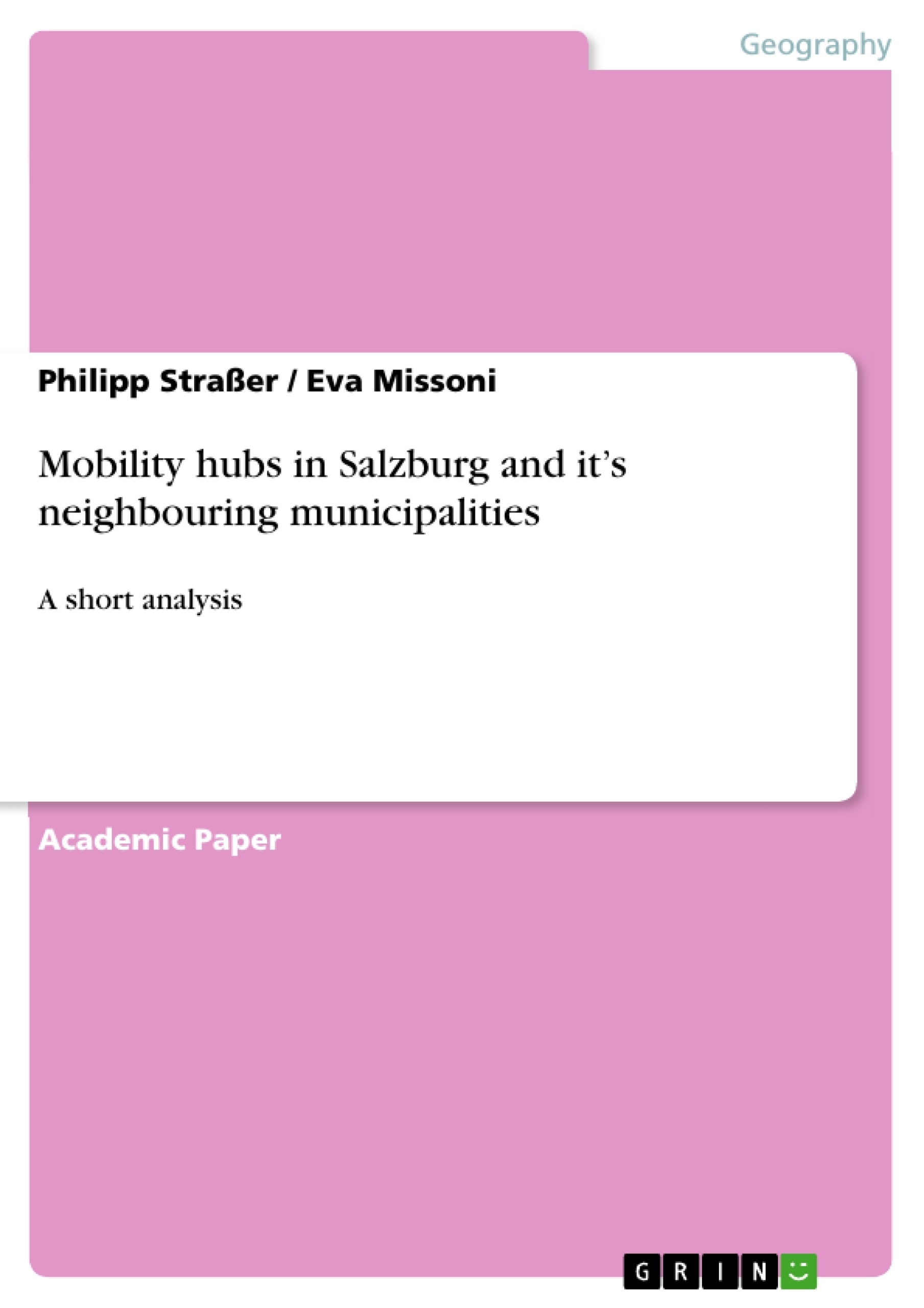This paper tries to find a solution for the identification of potential mobility hubs in Salzburg and if it is even possible to build at this place.
Originating from present service stops, combineOBUS analyses potential locations for innovative mobility hubs as places of connectivity. Mobility hubs do not simply serve as waiting points but offer different services: depended on the surrounding conditions that deal as parameters of suitability, “upgraded” stops for public transit also offer possibilities and amenities to obtain real-time-information about waiting times, WIFI-Access, store or rent bikes or store goods in smart lockers. In this way, the motivation to multimodal forms of mobility shall be fostered within the city of Salzburg and its surrounding municipalities.
A multicriteria approach was applied for the analysis, being based on different aspects that are important basis for the capability of installing a mobility hub. The analysis is based on service areas of 300 meters from each stop. For these service areas, inhabitants, workplaces, stores and shops, the cycling network, bus intervals, passenger frequency, number of interchangements as well as further points of interest (educational institutions, sights, hotels…) were set as parameters for the suitability of stops as mobility hubs. The overall suitability for setting up a mobile hub for each service stop was calculated and displayed on a map.
Inhaltsverzeichnis (Table of Contents)
- Introduction
- Motivation and State-of-the-Art
- Definition and characteristics of a “Mobility Hub”
- “Mobility Hubs” in the present literature
- Methodological approaches in the literature
- Selection of mobility hubs in the literature
- Methodological Approach
- Methodology to identify Mobility Hubs
- Data Acquisition
- Data preparation
- Area of interest
- Population and employee data
- Points of interest
- Potential Analysis for Mobility Hubs
- Creation of Service Areas around service stop locations
- Integration of data into service areas
- Integration of frequency data, service lines and intervals
- Calculation of suitability values
- Reintegration into ArcGIS Pro and identification of mobility hub locations
- Methodology to identify Mobility Hubs
- Detailed Planning and Design for a selected Mobility Hub
- Constructional design and bike parking facilities
- 2-D drawing of the area based on traffic planning principles and regulations
- On-site-inspection and survey of existing infrastructural equipment and furniture at the existing hub Europark
- 3D-Visualization of the Mobility Hub Europark
Zielsetzung und Themenschwerpunkte (Objectives and Key Themes)
The primary objective of this project is to analyze the potential of existing service stops within Salzburg and its neighboring municipalities to be transformed into innovative “mobility hubs.” These hubs, designed to be places of connectivity, will provide a range of additional services beyond traditional waiting points. The goal is to promote multimodal forms of mobility and encourage the use of public transport, walking, and cycling.
- The definition and characteristics of mobility hubs.
- A multi-criteria approach to identifying suitable mobility hub locations.
- The importance of integrating various data sources and parameters in the analysis.
- The role of detailed planning and design in creating functional and user-friendly mobility hubs.
- The benefits of a comprehensive approach to promoting sustainable transportation in urban environments.
Zusammenfassung der Kapitel (Chapter Summaries)
The first chapter introduces the project and highlights the need for innovative mobility hubs in Salzburg. It provides context by outlining the current transportation landscape and the need to address the negative impacts of private car use. Chapter 2 delves into the existing literature on mobility hubs, examining their definitions, characteristics, and methodological approaches. The chapter also discusses the selection of relevant parameters and indices for the analysis.
Chapter 3 outlines the methodological approach used to identify potential mobility hub locations. This includes the definition of relevant parameters, data acquisition, multi-criteria analysis in GIS, and communication of results. It details the process of data preparation, including the establishment of a focus area, the integration of population and employee data, and the classification of Points of Interest. The chapter concludes by explaining the calculation of suitability values for each service stop and the selection of 15 suggested mobility hubs.
Chapter 4 focuses on detailed planning and design for a selected mobility hub, Europark. It discusses the constructional design and bike parking facilities, the development of a 2D drawing based on traffic planning principles, and an on-site inspection and survey of existing infrastructure. Finally, it presents a 3D visualization of the proposed mobility hub at Europark.
Schlüsselwörter (Keywords)
The core themes of this project revolve around the concept of mobility hubs, their potential analysis, and the application of a multi-criteria approach. It explores the importance of incorporating various data sources and parameters, such as population density, employment centers, Points of Interest, and transportation infrastructure, to assess the suitability of service stops for transformation into mobility hubs. The project ultimately aims to contribute to the development of sustainable and user-friendly transportation solutions in the city of Salzburg.
- Arbeit zitieren
- Philipp Straßer (Autor:in), Eva Missoni (Autor:in), 2019, Mobility hubs in Salzburg and it’s neighbouring municipalities, München, GRIN Verlag, https://www.grin.com/document/590563




